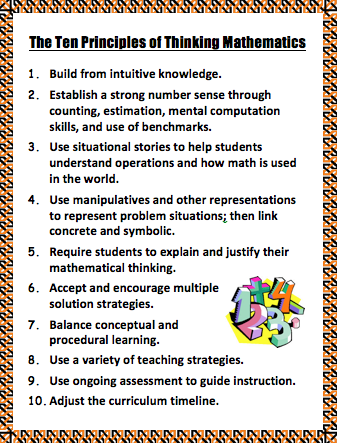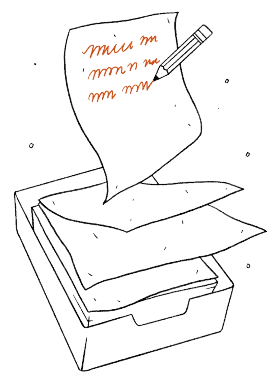Preparing lesson plans a substitute teacher for six days, participating in or sitting for 36 hours of professional development (PD), and an additional nine hours of out of class assignments may sound rather daunting given teachers’ overflowing plate of responsibilities. Yet almost three-quarters of my school’s instructional staff made a commitment to do that by participating in AFT’s Thinking Mathematics course this school year.
In an era of “not one more thing,” there must be learning opportunities that are practical and meet the demands of today’s learning standards. Thinking Mathematics does just that! This research-based course provides a rationale for math instructional strategies while providing teachers an opportunity to deepen their own content knowledge and see how the shifts of Focus, Coherence and Rigor are inherent in the math standards. Thinking Mathematics is written by teachers for teachers and is facilitated by teachers when provided to a school or district. It’s not a “silver bullet” packaged curriculum that can be bought off a shelf, but a reinforcement of proven math instructional strategies. The research foundation of the course is translated into 10 Principles that are intended to guide instruction and elicit the Eight Standards for Mathematical Practice.
Teachers get to experience the instructional strategies in action while implementing the following principles:
· Establish a strong number sense through counting, estimation, use of benchmarks, mental computation skills, and understanding the effects of operations;
· Use manipulatives and other representations to illustrate the problem, and then link the concrete example to the symbolic depictions; and
· Require students to describe and justify their mathematical thinking.
The Thinking Mathematics courses are specific to grade levels K-2, 3–5, and 6–8 and addresses the Coherence of the standards for those grades. Teachers read excerpts from the Progression Documents, which helps in developing math content through the lens of the Standards. Teachers “do the math,” as well. The course provides an environment that encourages risk taking to solve and tackle problems using novel approaches, while honing questioning techniques and strategies to critique others’ reasoning. Teachers are able to get a glimpse of what a Thinking Mathematics classroom looks and sounds like by viewing classrooms featured on the Teaching Channel.
The Thinking Math course timeline varies among districts. In our district, the course was structured to occur over several months so that teachers had time to truly implement, reflect, and discuss with their peers. Having teachers from the same school attending provided a common language and background to share during future professional learning communities (PLCs). Ongoing coaching during implementation furthers the successful execution of the 10 Principles. We utilized Student Achievement Partner’sInstructional Planning Guide (IPG) Coaching Tool. The guide provides specific feedback for continued self-reflection and growth. If teachers are implementing the 10 Principles, evidence of the Core Actions as identified and explained in the IPG will be visible.
But is it really worth all that time? Participants continually say “YES!” Comments from our recent course encapsulate the value teachers see in this unique professional learning experience:
“When I was in school, math was a huge struggle for me, I am now finally able to understand the concepts … and how to build a strong foundation for my students and now my kids love math!” C. Clark, 3rd grade teacher
“As a new teacher to 4th grade, all the information presented in Thinking Math was exceptional. I have great new strategies to try with my kids.” A. Bennett, 4th grade teacher
“Thinking Math allowed me to show that there is research behind why students should be able to show their thinking. You have to really focus on the conceptual understanding before moving to procedural and that takes time.” S.Tager, 5th grade teacher
“Thinking Math has been wonderful. The trainers are real life teachers who provide real life examples and speak from a teacher’s point of view … it’s been very empowering!” T. Graham, 3rd grade teacher
For more information on offering Thinking Mathematics to educators in your district or school, contact your union’s local site coordinator or Alice Gill, Senior Associate Director, AFT Educational Issues Department Coordinator & AFT Thinking Mathematics & Lesson Study via email at agill@aft.org.












